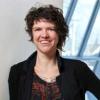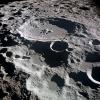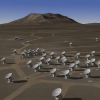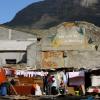Science & Technology
 <p>Sandra Q. Firmin, curator of UB Art Galleries at SUNY Buffalo, has been named the director of the University of Colorado Boulder Art Museum. Firmin will begin as director on April 21, replacing interim director Stephen Martonis.</p>
<p>Sandra Q. Firmin, curator of UB Art Galleries at SUNY Buffalo, has been named the director of the University of Colorado Boulder Art Museum. Firmin will begin as director on April 21, replacing interim director Stephen Martonis.</p>- <p>It took 48 games for the first and second rounds of the 64-team NCAA men’s basketball tournament to be decided, and millions of fans are deliriously awaiting the Sweet 16 to commence later this week.</p>
- <p>University of Colorado Boulder alumnus and NASA astronaut Steve Swanson will blast off with two Russian crewmates for the International Space Station March 25, his third mission to the orbiting facility.</p>
 <p>A new study led by the University of Colorado Boulder showed that as a group, volunteer counters who examined a particular patch of lunar real estate using NASA images did just as well in identifying individual craters as professional crater counters with five to 50 years of experience.</p>
<p>A new study led by the University of Colorado Boulder showed that as a group, volunteer counters who examined a particular patch of lunar real estate using NASA images did just as well in identifying individual craters as professional crater counters with five to 50 years of experience.</p> <p>The Orion Nebula is home to hundreds of young stars and even younger protostars known as proplyds. Many of these nascent systems will go on to develop planets, while others will have their planet-forming dust and gas blasted away by the fierce ultraviolet radiation emitted by massive O-type stars that lurk nearby. </p>
<p>The Orion Nebula is home to hundreds of young stars and even younger protostars known as proplyds. Many of these nascent systems will go on to develop planets, while others will have their planet-forming dust and gas blasted away by the fierce ultraviolet radiation emitted by massive O-type stars that lurk nearby. </p>- <p>Doctors’ unconscious biases favor whites but do not affect high blood pressure treatment for their minority patients, according to a University of Colorado Boulder study, even though a previous study by the same research group found that doctors’ biases are reflected in lower ratings by African-American patients.</p>
<p>The new research, led by Irene Blair, an associate professor in CU-Boulder’s Department of Psychology and Neuroscience, is published in the <em>Journal of General Internal Medicine.</em></p> - <p>CU System news release</p>
<p>DENVER – Five members of the University of Colorado community are recipients of the 2014 Thomas Jefferson Award, among the highest honors given at CU, the state’s flagship university. </p> - <p>Exposing leafy vegetables grown during spaceflight to a few bright pulses of light daily could increase the amount of eye-protecting nutrients produced by the plants, according to a new study by researchers at the University of Colorado Boulder.</p>
<p>One of the concerns for astronauts during future extended spaceflights will be the onslaught of eye-damaging radiation they’ll be exposed to. But astronauts should be able to mitigate radiation-induced harm to their eyes by eating plants that contain carotenoids, especially zeaxanthin, which is known to promote eye health.</p>  <p>The Mazal Holocaust Collection, considered the world’s largest privately owned Holocaust archive and the most significant U.S. collection outside of the Holocaust Memorial Museum in Washington, D.C., has been donated to the University of Colorado Boulder.</p>
<p>The Mazal Holocaust Collection, considered the world’s largest privately owned Holocaust archive and the most significant U.S. collection outside of the Holocaust Memorial Museum in Washington, D.C., has been donated to the University of Colorado Boulder.</p> <p><span>The University of Colorado Boulder has pledged to double the number of CU-Boulder students who participate in an international educational experience by 2020. </span><span>The commitment, which will be implemented by CU-Boulder’s </span><a href="http://studyabroad.colorado.edu/">Study Abroad Programs</a><span> office, is part of the Generation Study Abroad pledge launched today by the Institute of International Education (IIE). </span></p>
<p><span>The University of Colorado Boulder has pledged to double the number of CU-Boulder students who participate in an international educational experience by 2020. </span><span>The commitment, which will be implemented by CU-Boulder’s </span><a href="http://studyabroad.colorado.edu/">Study Abroad Programs</a><span> office, is part of the Generation Study Abroad pledge launched today by the Institute of International Education (IIE). </span></p>


